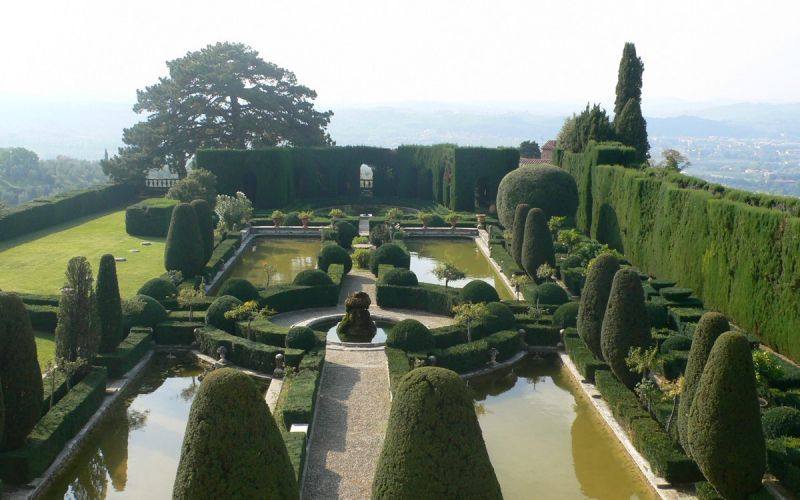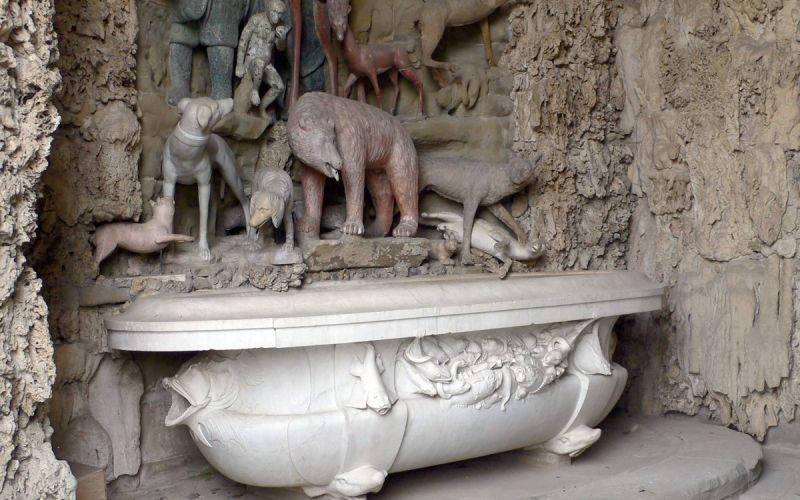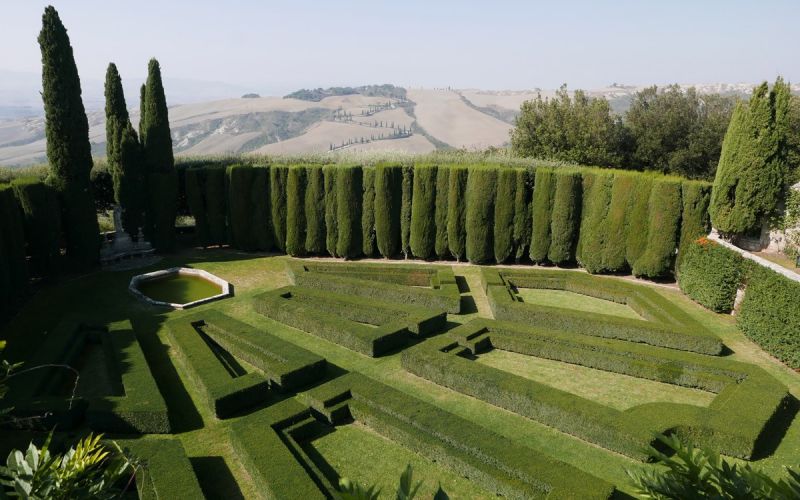Tuscan historic gardens and Villas
Tuscan historic gardens and Villas, in both the countryside and cities, from the medieval times as well as from the Renaissance, or recently designed, are a unique heritage.
The Medieval gardens were first constructed as medicinal herb gardens, where plants with medicinal properties were housed and studied. The Pisa botanical garden was established in 1543 by Cosimo I de’ Medici, and 2 years later he established one in Florence. Many botanical gardens have been created in monasteries, such as the one that can be seen in Badia a Coltibuono.
But the creation of the Medicean Villas in Fiesole, Poggio a Caiano, started to establish the modern design for a garden, a place that is also an outdoor museum, adorned with many works of art. The 16th century Medicean gardens at Castello, Pratolino, Boboli, were imitated all over Europe. Lenôtre, who designed Versailles ‘gardens, came to Tuscany to get inspiration! The garden became an image of power. They were decorated by grottoes, orchards, “ragnaie” for bird catching, “boschetti”… Water, essential for irrigation was collected in ponds or basins and used for fountains and waterworks.
In the late 17th and early 18th century, Baroque gardens were established, with beautiful perspectives, such as Villa Gamberaia close to Florence, or Villa Marlia close to Lucca.
In the 19th century came the vogue for Romantic gardens, derived from the English landscape gardens. The formal, symmetrical gardens of the 17th century were changed according to this new style, usually including a lake, gently rolling lawns set against groves of trees, and creation of classical temples, bridges, and other picturesque architecture, designed to recreate an idyllic pastoral landscape.
In the 20th century, it is an English landscape architect, Cecil Pinsent, who reinterpreted the Renaissance and Baroque garden at Villa I Tatti, Villa le Balze and Villa la Foce. Pietro Porcinai, an Italian architect, was also active in creating modern gardens.
Today the Tuscan garden tradition is still very much alive as shown by many new initiatives, for example with the insertion of contemporary works of art and sculptures in existing formal gardens.
There are also beautiful gardens in our charm boutique hotel, Villa le Barone, (link) with a cutting flowers garden, a fruit trees orchard, many rose beds, box hedges….and superb views on the Chianti hills ! And from Villa le Barone, many visits can be organized for guests to discover Tuscan historic gardens














